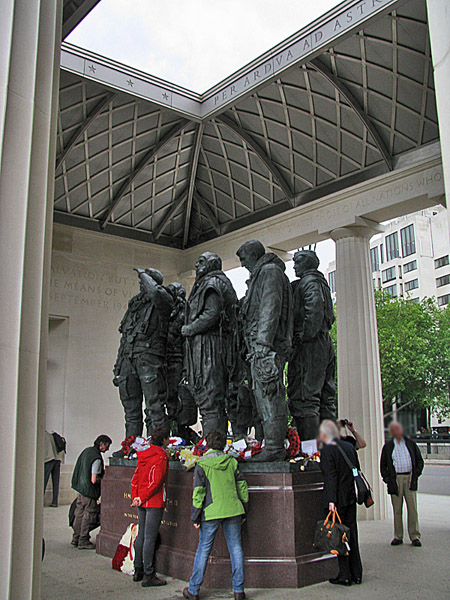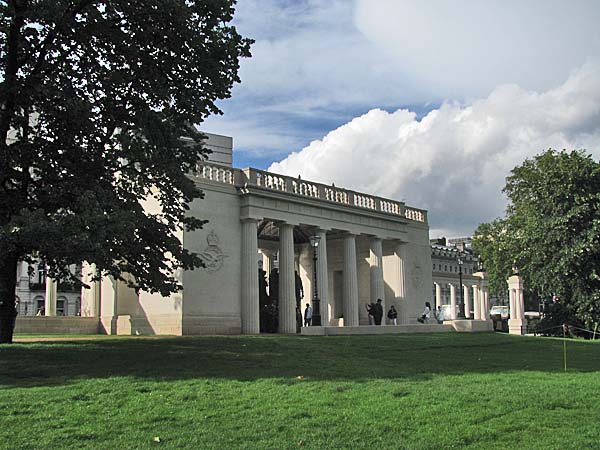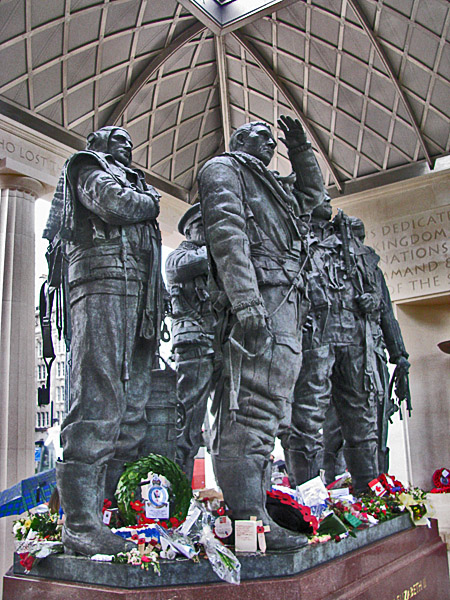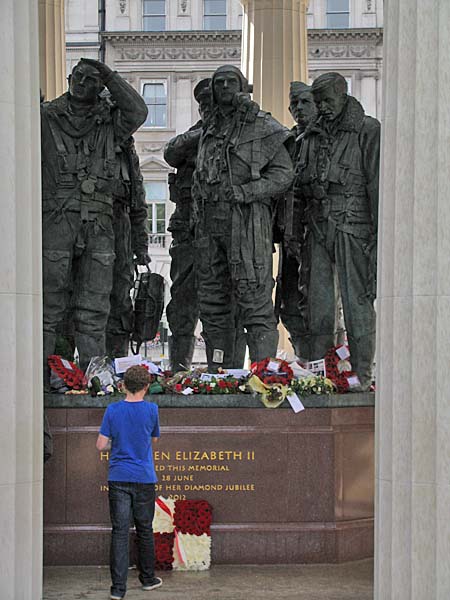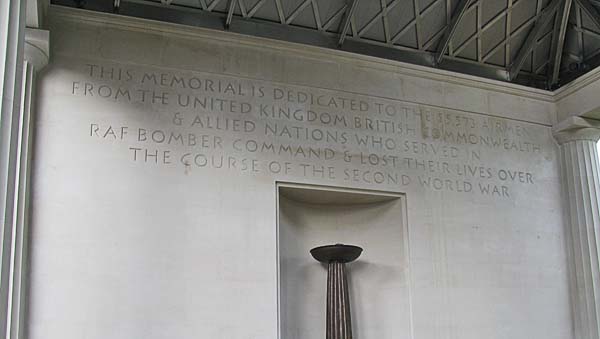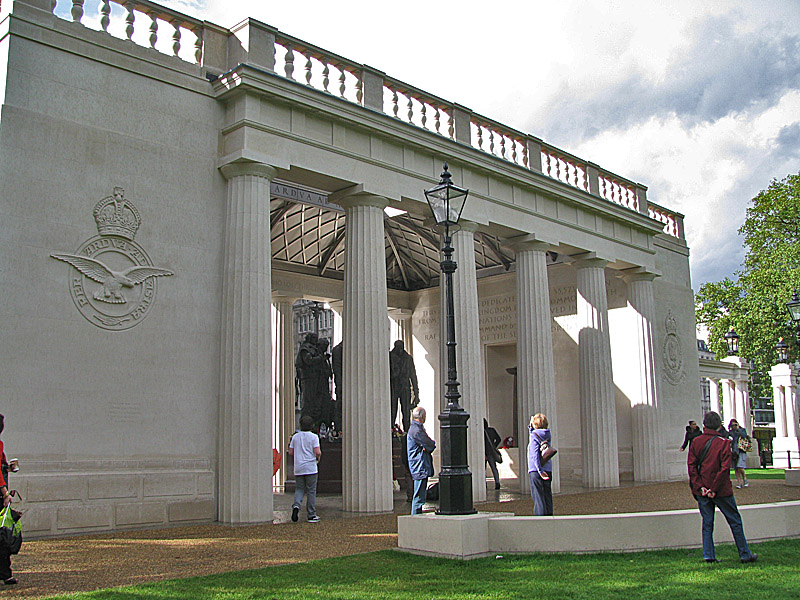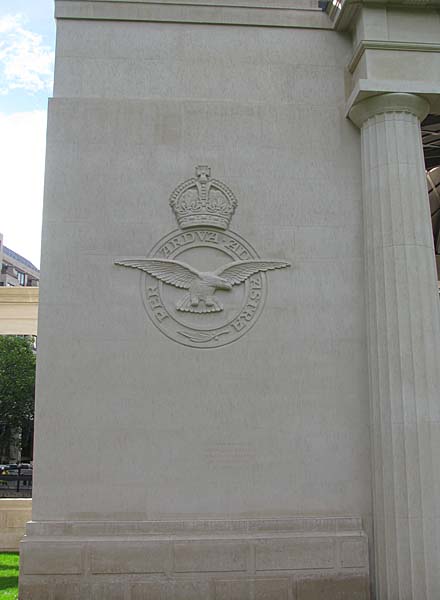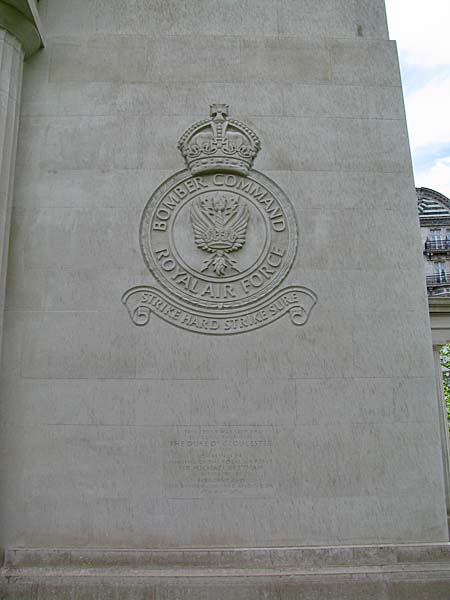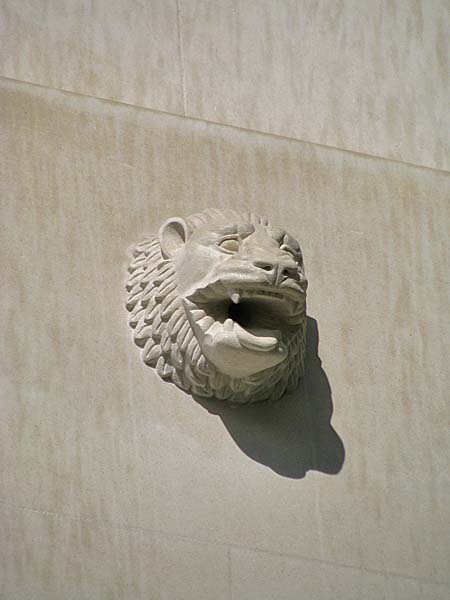| Architect |
Liam O'Connor |
| Date
Built |
2012 |
| Location |
Green Park
and Piccadilly |
| Description | |
|
The Bomber Command
memorial in Green Park was finally
unveiled by the Queen in 2012 after a
prolonged period during which supporters
of the memorial had to overcome
controversy about the role of Bomber
Command and find the estimated £5.6m
required to build it.
The architect of the
building, that houses Philip Jackson's
sculpture, was Liam O'Connor. The
Royal Airforce Benevolent Fund website
says of the memorial that it is, "
... built to be modern, yet classical,
in Portland stone. ... The
design for the roof incorporates
sections of aluminium recovered from a
Handley Page Halifax III bomber (LW682
from No. 426 squadron) shot down over
Belgium on the night of 12 May 1944,
in which eight crew were killed."
Gordon Rayner, chief reporter with the
Telegraph added that, "O’Connor
paid such attention to detail that
even the rivets holding the metal
ceiling together are exact scale
replicas of those used in bomber
aircraft." 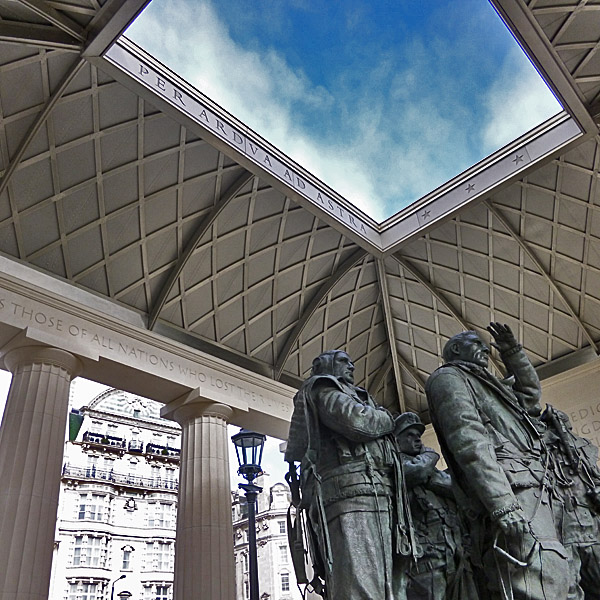
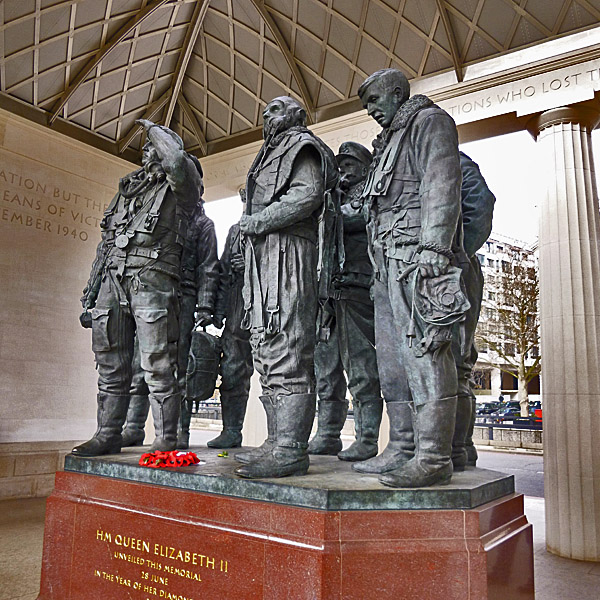
It should be noted though
that not all the comments about the new
memorial have been positive. "O'Connor
is one of a group of classicising
architects who blossom in proximity to
royal palaces, where they are suddenly
fertilised as by a rich humus by the
favour of the Prince of Wales, and he
is not the worst. His memorial has
some kind of simplicity, at least,
which compares favourably to the
Gilbert and Sullivan
additions recently made to
Kensington Palace. But it still reeks
of the application of special favours,
and the suspension of judgment ....
Its style is amnesiac classical, with
ranks of Doric columns surmounted by a
weirdly puny balustrade, a version of
historic architecture that never
precisely existed, but is also
oblivious to anything that might have
happened, culturally or
technologically, in the last several
decades."
Inside the building
stands a group of seven bronze aviators
rising 9 feet above the plinth. It
depicts the men at the end of a mission
standing on the airfield looking skywards
for planes that have yet to return.
The impressive sculpture is the result of
extensive research by Jackson who, "
... borrowed original flying suits and
equipment from the RAF Museum in
Hendon, interviewed veterans and
studied countless photographs to
ensure every strap, buckle and harness
was precisely recreated."
As the memorial
indicates, it is dedicated to the 55,573
airmen from the UK, Commonwealth, &
Allied Nations who served in Bomber
Command and lost their lives in
WWII. Around the feet of the giant
airmen the public have left flowers,
photographs, and messages dedicated to
their relatives who are honoured by the
memorial.
|
|
|
Bomber
Command Memorial, Green Park, London
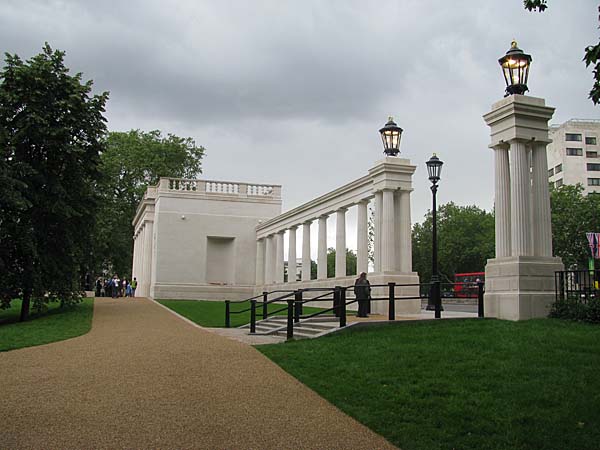 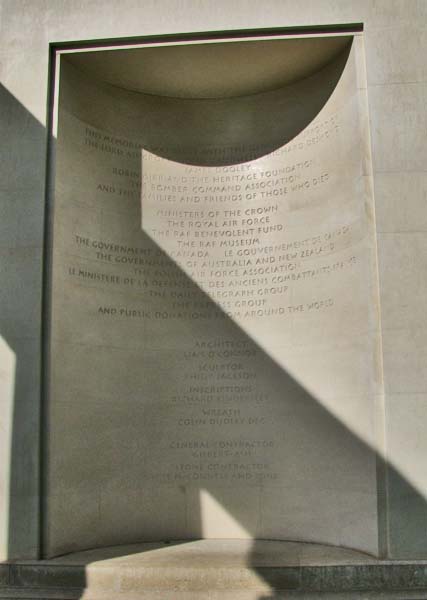 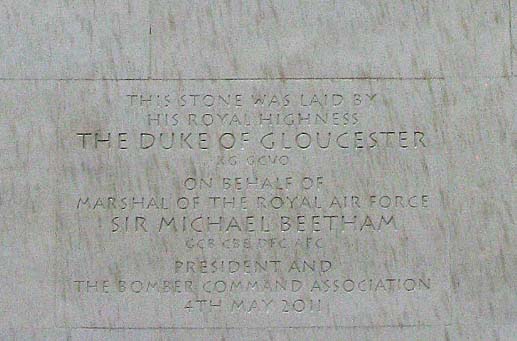 |
